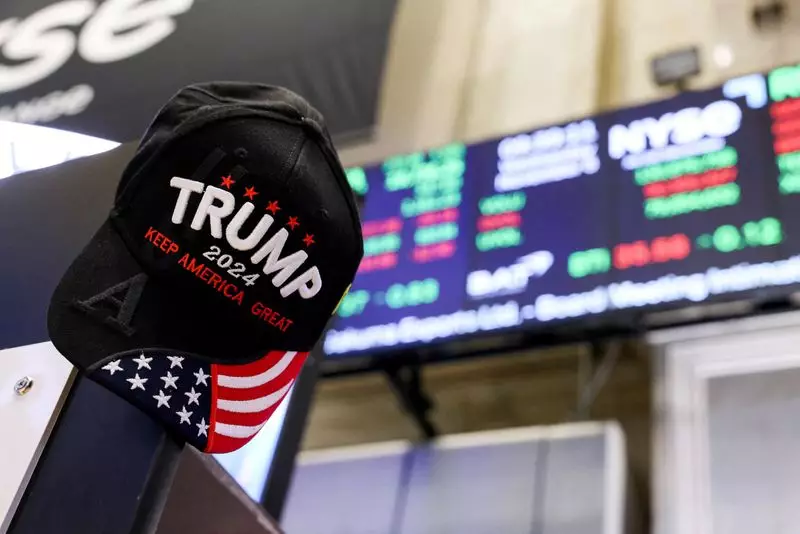As Friday’s market session closed, Wall Street’s major indexes reported losses amidst a backdrop of mixed economic indicators and corporate earnings. Investors appeared to exercise caution, unsure of how to react to the latest data that painted an ambivalent picture of the current economic landscape. As the week wore on, the technology sector emerged as a significant drag, particularly due to fluctuations in the performance of megacap stocks, including the artificial intelligence chip giant, Nvidia.
Market dynamics shifted dramatically after an early week rally; by week’s end, many industry stalwarts were underperforming. The allure of the tech sector, which had driven stocks higher earlier, fell prey to a reality check, reiterating the volatility inherent in market trends. Economic data continued to flow in, with housing market statistics surpassing expectations, yet a survey from S&P Global indicated a reduction in business activity, plummeting to a nine-month low amid rising prices. This mixture of growth signals alongside inflationary concerns has left both traders and policymakers in uncharted territory.
On the consumer front, the University of Michigan’s final report on consumer sentiment revealed a decline to 71.1, down from the previous estimate of 73.2. This dip underscores a possible shift in consumer confidence, an essential element for economic vitality. Investors are gearing up for a critical Federal Reserve meeting on January 28-29, focusing their attention on potential changes in monetary policy that could stem from the latest economic data.
According to CME Group’s FedWatch tool, expectations are building that the Fed may hold interest rates steady in the immediate future while hinting at a rate cut in June. As Scott Helfstein from Global X noted, the mix of economic signals and earnings reports has fostered a climate of cautious anticipation—a sentiment echoed by many in the investment community. With the impending Fed meeting and a plethora of economic data releases, it is clear that investors are navigating through foggy waters, suspended between optimism for future growth and anxiety regarding inflationary pressures.
Further complicating the market backdrop is ongoing uncertainty surrounding U.S. trade policy under President Donald Trump’s administration. The prospect of tariffs on key trading partners, including Canada, Mexico, China, and the European Union, looms large as the administration intimated potential announcements to be made on February 1. Analysts speculate broader strategies might be laid out by April. The ambiguity surrounding these trade decisions has contributed to investor apprehension, particularly regarding their implications for inflation and interest rates.
The latest market performance metrics illustrate the divergence in sector growth. For instance, the Dow Jones Industrial Average saw a decline of 140.82 points, or 0.32%, ending the week at 44,424.25. In contrast, despite Friday’s losses, the S&P 500 managed a 1.74% climb over the week, buoyed predominantly by gains in the communications services and utilities sectors.
As for specific sector performance, the technology sector, once a beacon of growth, experienced a notable downturn on Friday, highlighted by a 7.2% decline in shares of Texas Instruments. This slump occurred as the company issued a disappointing forecast for first-quarter profits, pointing to inventory challenges in vital markets. Nvidia also contributed to tech’s struggles, with a decline of 3.1%, reflecting the sector’s broader vulnerability following a transformative week.
Conversely, utilities emerged as a bright spot, led by NextEra Energy, which recorded a significant rise of about 5.2%, thus positioning itself as the top gainer within the S&P 500 on that day. American Express demonstrated resilience with a 12% leap in fourth-quarter profits; however, shares fell 1.4%, indicative of broader market pressures impacting investor sentiment.
While certain sectors within the market show promise and reflect underlying strength, the collective atmosphere remains teetering on a knife’s edge influenced by evolving economic indicators, consumer sentiment, trade policy uncertainty, and fluctuating corporate performances. As investors brace for an important week ahead, characterized by significant economic reports and the Federal Reserve’s anticipated decisions, the road may remain bumpy as the market grapples with these complex, interwoven factors.

